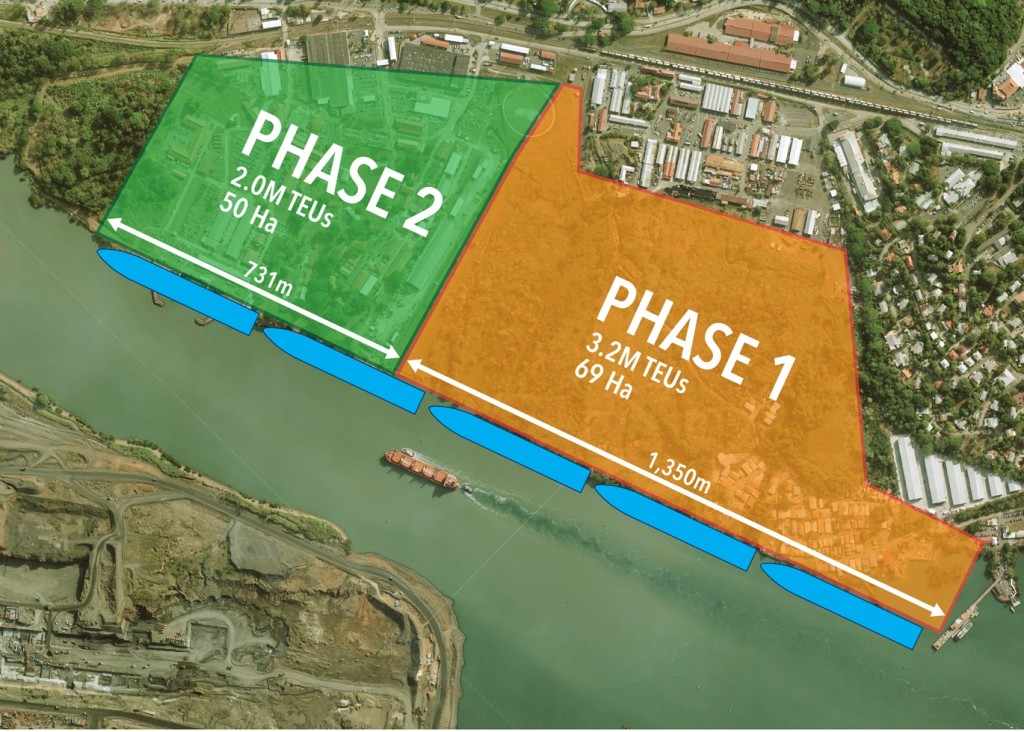In a bid to attract light manufacturing and assembly activities, the Panama Canal is focusing its efforts on a new logistics zone, as well as the construction of its new transhipment container terminal at Port Corozal, which it will request proposals for once an environmental impact study has been completed in February, 2016, according to the Journal of Commerce.
The new transhipment hub at Corozal aims to limit the number of port calls along the Western Hemisphere for post-Panamax ships.
Jorge Quijano, Administrator of the Panama Canal, said: “Our main business is transit in the canal and that will be there. What we’re adding is additional magnetism by having more capacity, more transshipment capacity.
“Transshipment is best located at a central location — at a hub. And Panama is that central location. So don’t send the big ship going down south if you can have a small ship doing that route.”
Dan Smith, Partner at Tioga Group, said: “I know that for a while Wal-Mart transshipped cargo for Houston at Panama where they were splitting off West Coast volume from East Coast volume. I think transshipment in Panama is going to be a very live option, particularly for the Gulf Coast.”
For all the latest on the Panama Canal, click here
Shortage of Ports in the Panamanian Pacific
It is not only the port of Corozal which needs immediate promotion, there is also an urgent need to keep building port infrastructure in order to take advantage of the Canal expansion.
EDITORIAL
The opinion of entrepreneurs in the logistics sector is unanimous: the forthcoming opening of the new and expanded Panama Canal locks should be the starting point for consolidating Panama as a major logistics hub for the hemisphere.
They point out the current lack of space, especially in the Pacific docks, to meet shippers demand for transfer operations. The Canal expansion will increase the country’s attractiveness as a logistics hub, but must be planned for now, along with an increase in the supply of docks and other related infrastructure to take advantage of that demand. If Panama does not increase its supply of port services, other ports in the region will receive the benefit.
An article on Martesfinanciero.com items reports on the port project in Corozal stating that: “… 11 port operators, the largest in the world, have formally expressed their interest: Terminal Investment Limited, SA (TIL) (Luxembourg); Eurogate GmbH & Co. (Germany); Carrix, Inc. (EU); Hyundai Engineering & Construction Co. (Korea); APM Terminals (The Netherlands); Ports America (USA); CMA-CGM (France); Evergreen (Taiwan); China Shipping Ports Development Co. LTD and China Harbour Engineering Company LTD (Republic of China); Mitsui OSK Lines (Japan) and Patrick Terminals (Australia). “Meanwhile, there is a delay in the process of securing port operators legal ability to receive the same tax benefits that are currently enjoyed by other port operators in the country.
“… The executive director of the Maritime Chamber of Panama (CMP), Luciano Fernandes, values ??the presence of another Pacific port and not just because of its convenience. “It is vital” to complement the country’s logistics center. “The Pacific side is where there is the most need of port infrastructure, roads, logistics parks and other developments. When you have a sea front, which is the case in Corozal, it makes sense to use it to transfer goods through a port terminal, ” he said, noting that it will make the sector more competitive. The manager of the CMP referred to the fact that shipping lines can not operate in the Pacific due to lack of capacity in ports. “These lines design their routes depending on the availability of port terminals. With no windows at the docks, which refers to the specific time slots needed for an operation of a ship with a certain amount of cargo, these carriers can not operate. “
